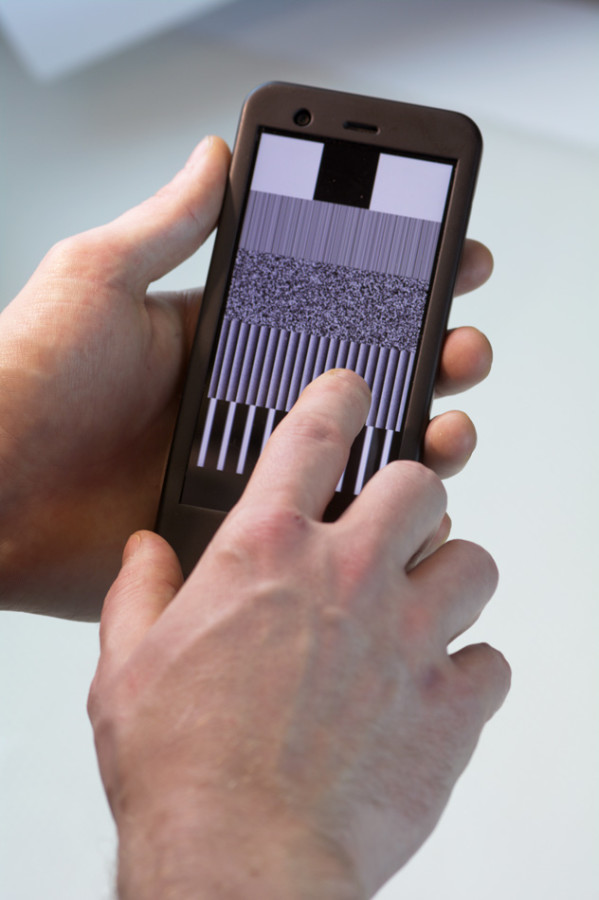McCormick students create haptic phones to deliver sense of touch to screens
On the TPad Phone, users can “feel” an image displayed on a touchscreen. The new device, developed by two Northwestern graduate students, allows textures to be sensed through a special touchscreen technology.
January 12, 2015
Two McCormick graduate students have developed a variety of mobile devices that allows people to feel textures on screens.
Joe Mullenbach, a fifth-year graduate student, and Craig Shultz, a third-year graduate student, have developed the TPad Phone, a commercial device that uses ultrasonic waves to generate textures on a sheet of glass overlaying the screen. The first six TPad Phones were shipped to customers in late December.
“We have control of the resistance force as you slide your finger across the screen,” Mullenbach said, describing the surface haptics technology used in the phone.
Mullenbach and Shultz have developed a variety of such haptic devices, including the TPad Fire, TPad Nexus, TPad Watch and TPad Phone, since beginning their work in 2012.
Mullenbach said he has led the TPad Tablet Project since April 2012, aiming to create an inexpensive yet powerful device that could be distributed to other researchers. Shultz, who joined the project in the fall of 2012, said he primarily works on the electrical engineering and software aspects of the research, complementing Mullenbach’s work on the mechanical side.
Mullenbach said NU will hold a conference on haptics in June, and he plans to include a contest between students across the world to design applications for the TPad Phone.
McCormick Profs. Edward Colgate and Michael Peshkin invented the first version of surface haptics technology in 2006 with two others, and continue to oversee the development of the TPad Tablet Project. Mullenbach said older devices, which consist of extensive and bulky setups, have given way to more compact, user-friendly devices.
“(Mullenbach and Shultz) just lined up all these issues, you know, and addressed them sort of one by one, and now they have this TPad Phone, which is really a very elegant piece of hardware,” Colgate said.
Both Mullenbach and Shultz emphasized the importance of their fellowships from the Segal Design Institute in fostering interdisciplinary research with other Northwestern professors.
“(Segal) has been a driving force for making this well-designed and easy-to-use,” Shultz said. “(It’s) really opened up a lot of collaborations for our lab.”
One collaboration with Communication Prof. Anne Marie Piper investigated various ways to communicate via haptics. This project resulted in three different applications: a haptics messaging application, a virtual touch application and a picture editing application.
“You had a palette of different textures that you could choose and paint over a picture, and then you could feel the picture,” Mullenbach said of the latter application.
Another project in progress using this technology involves the creation of haptic e-books for children.
“Imagine you are reading your child a book and you can put your finger on the screen and feel the fur of the bunny or the texture of a tree,” Mullenbach said.
Other applications of the technology include keyboards on phone screens, navigation through a “smartwatch” and presentation of graphical information to people who are blind.
Mullenbach and Shultz both said the TPad technology can be expanded to a wide range of devices.
“The touchscreen as you know it today is basically incomplete,” Mullenbach said. “The technology is not done developing … you haven’t been able to feel it.”
Email: [email protected]
Correction: Due to an editing error a previous version of the photo caption on this story misstated the photo credit. The Daily regrets the error.


